7 best winter hikes in Rocky Mountain National Park
Crunch through the snow surrounded by dazzling peaks on some of the best winter hikes in Rocky Mountain National Park

Home to more than 100 dazzling Rocky Mountain peaks that tower over 11,000ft and only an hour and a half drive from Denver, Colorado’s crown jewel makes both a memorable day trip and a rewarding adventure holiday at any time of year. When the summer crowds clear out and the majestic landscape is blanketed in snow, however, Rocky Mountain National Park transforms into one of the most beautiful winter wonderlands you can possibly imagine. If you love a cold weather adventure, you’ll want to grab some traction to wear with your winter hiking boots and enjoy crunching through the snow on some of the best winter hikes in Rocky Mountain National Park.
Rocky Mountain National Park sits near the scenic resort town of Estes Park in northern Colorado and its 415 square miles of stunning wilderness attract millions of visitors every year for good reason. Now, with an elevation that begins at nearly 8,000ft and soars to over 14,000ft, it should come as no surprise that not all of the park is accessible in winter months, however. The renowned scenic drive on Trail Ridge Road is closed from Many Curves Road to the west entrance in the winter, which means you’ll need to enter from Estes Park. Scenic Old Fall River Road is also closed for the season and driving in the park generally can be slow-going and you’ll need proper traction on your tires, but we recommend you ditch your car as soon as possible and head for some of these great hikes east of the Continental Divide.
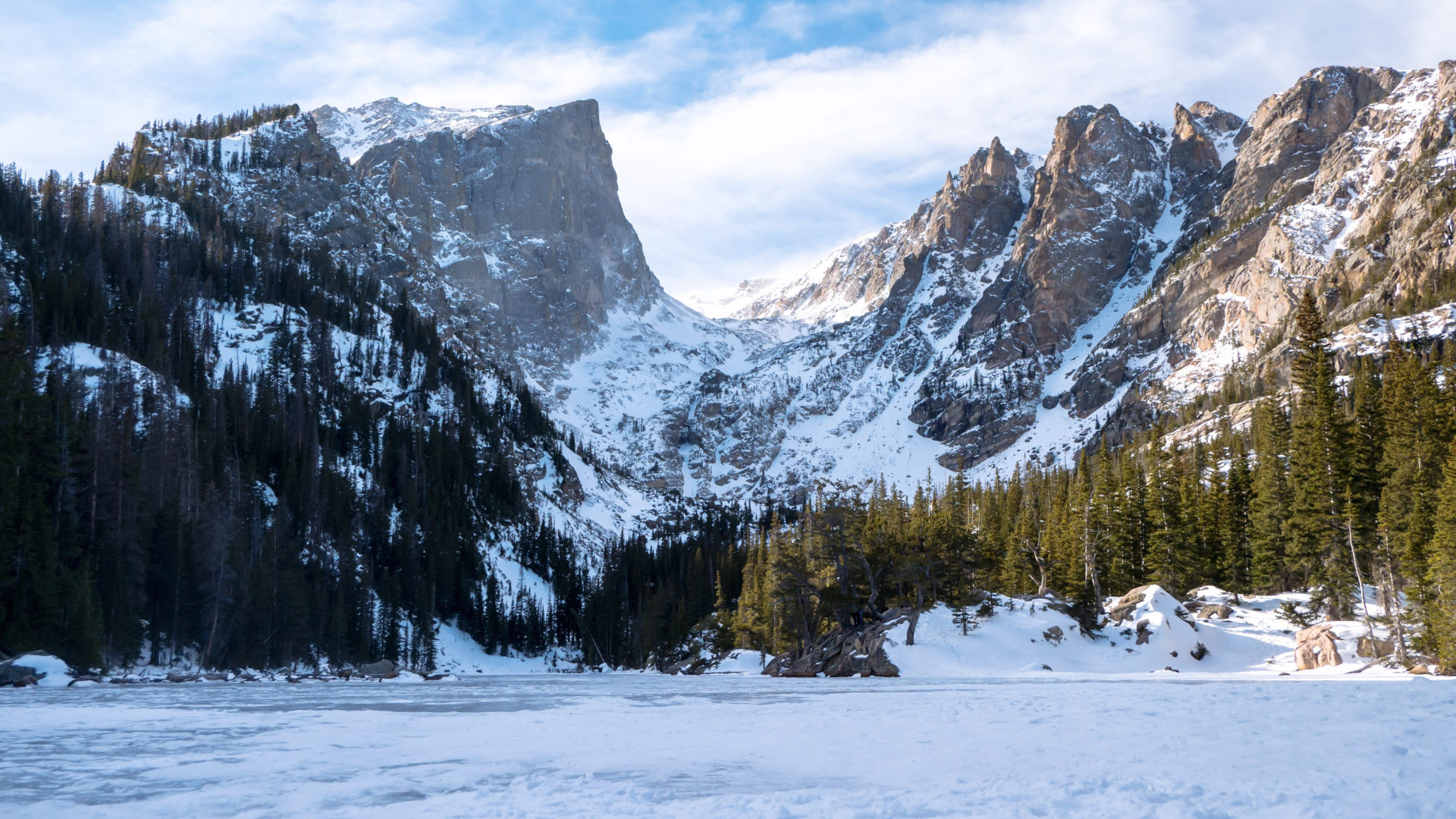
Unless there has been a recent storm, you’ll probably find that for most of these hikes, winter traction devices such as Yaktrax or Microspikes will suffice, but for deeper snow, plan on using snowshoes and remember that between the snowy surfaces and the altitude, the hiking in winter may be more taxing than what you’re used to. Hike with trekking poles to help you stay balanced on slick surfaces, dress in winter hiking layers to prevent frostbite and keep your eyes peeled – lots of the park’s famous wildlife like elk, bighorn sheep and moose will be easier to see against the white backdrop!
1. The Pool
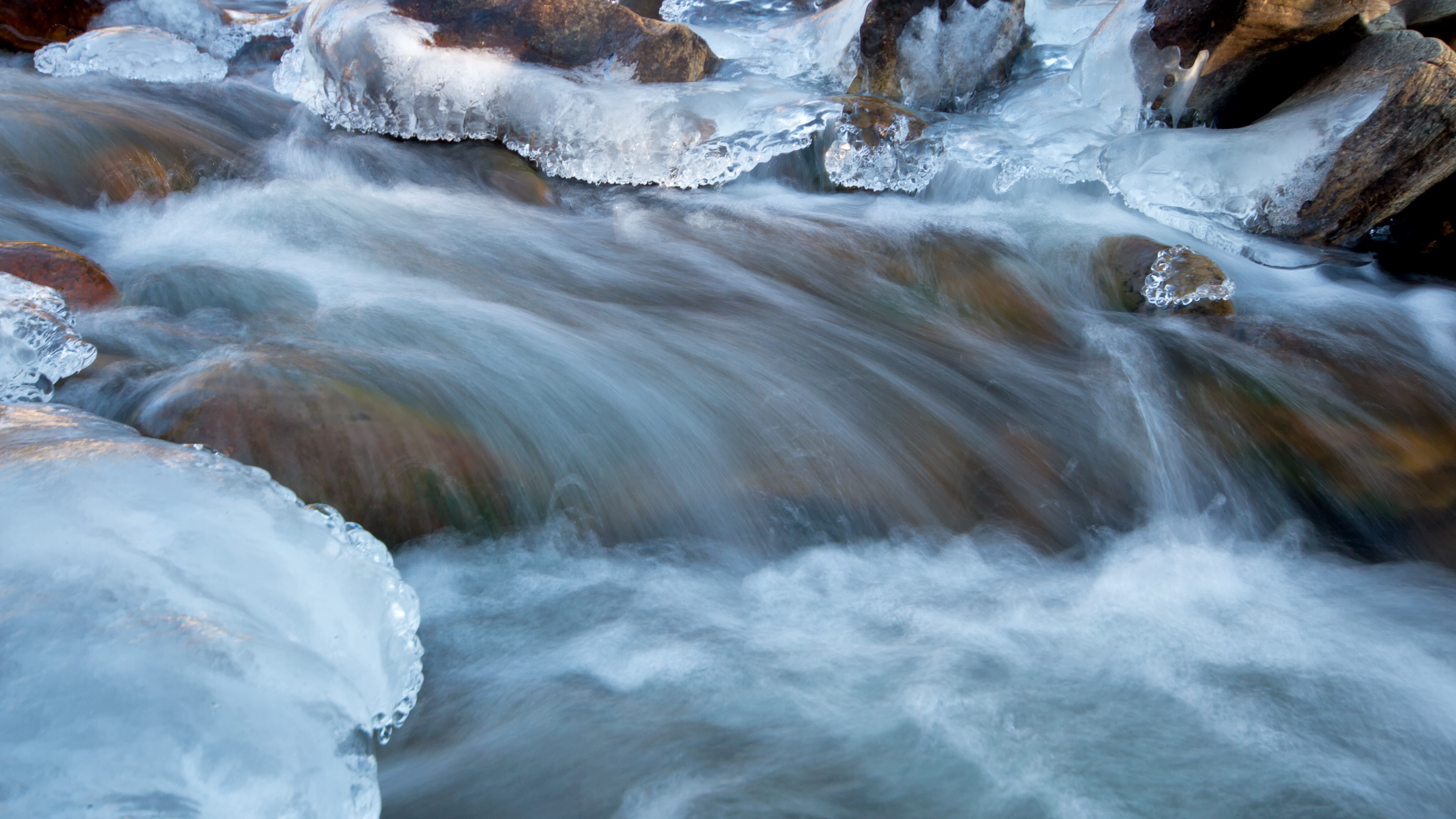
Distance: 2.5 miles
Difficulty: Easy
The Pool is a swirling confluence where the Big Thompson River meets Fern Creek and Spruce Creek that is reached by quiet, easy walking along the river with opportunities to spot frozen waterfalls and snow-covered giant boulders on the way. Begin at the Cub Lake trailhead and walk along the snowy road through the woods for about a mile to the Fern Lake Trailhead before joining the Fern Lake trail. After reaching The Pool, you can return the way you came or join the Cub Lake trail to make a six-mile loop.
2. Sprague Lake
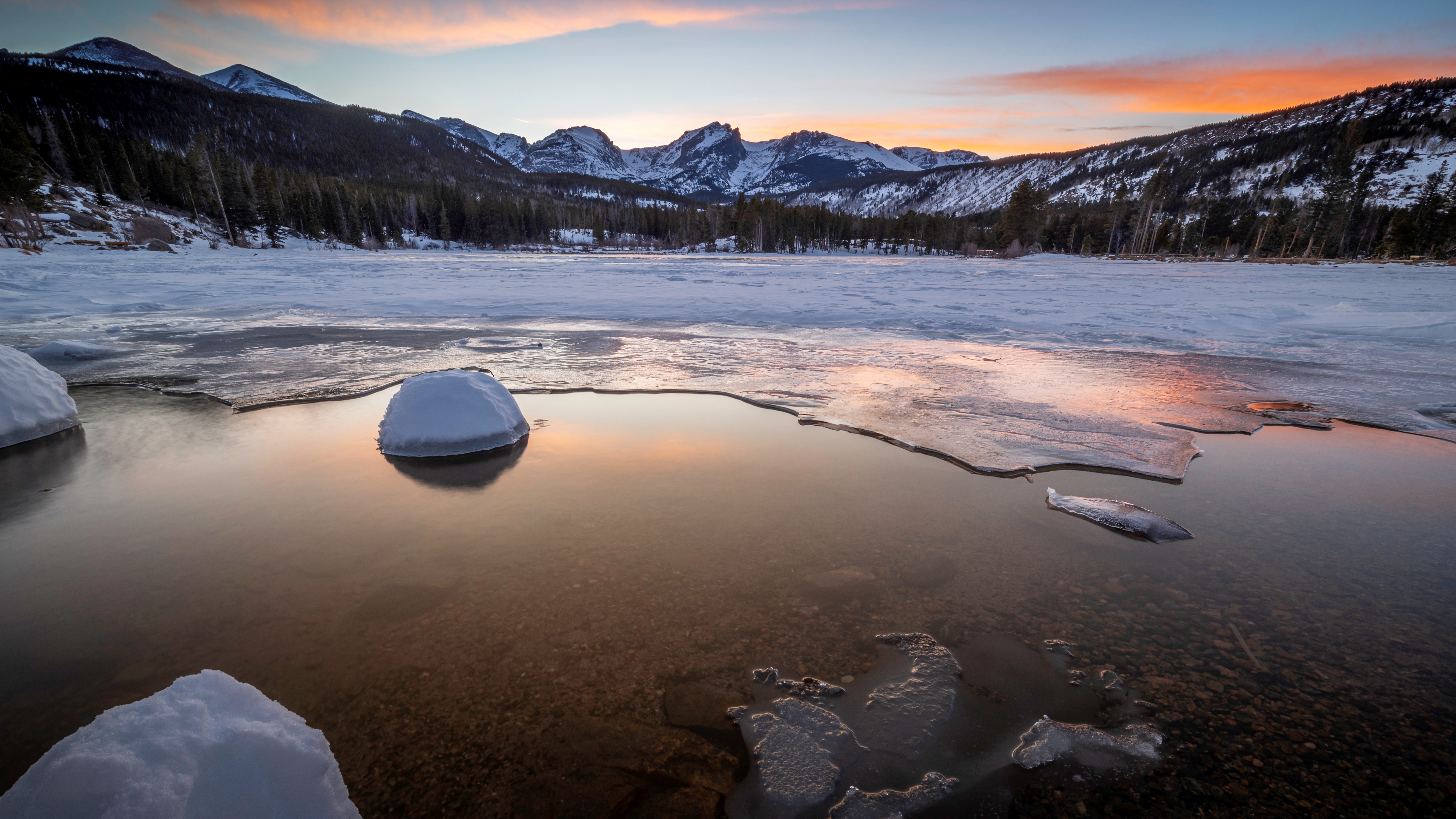
Distance: 1 mile
Difficulty: Easy
The walk around Sprague Lake is truly that – just a gentle walk, but it’s the views that make this worth adding to the list. From the trailhead on Bear Lake Road, the stroll round the frozen lake named for one of the original settlers in the area treats you to panoramic views of the surrounding peaks including Half Mountain, Flattop, Thatchtop, Taylor Peak, Otis Peak, Hallett Peak and Notchtop Mountain, which are all of course shrouded in snow and looking splendid at this time of year. This walk is great for those of you who have just arrived at high altitude, or when you need a rest day.
All the latest inspiration, tips and guides to help you plan your next Advnture!
3. Upper Beaver Meadows
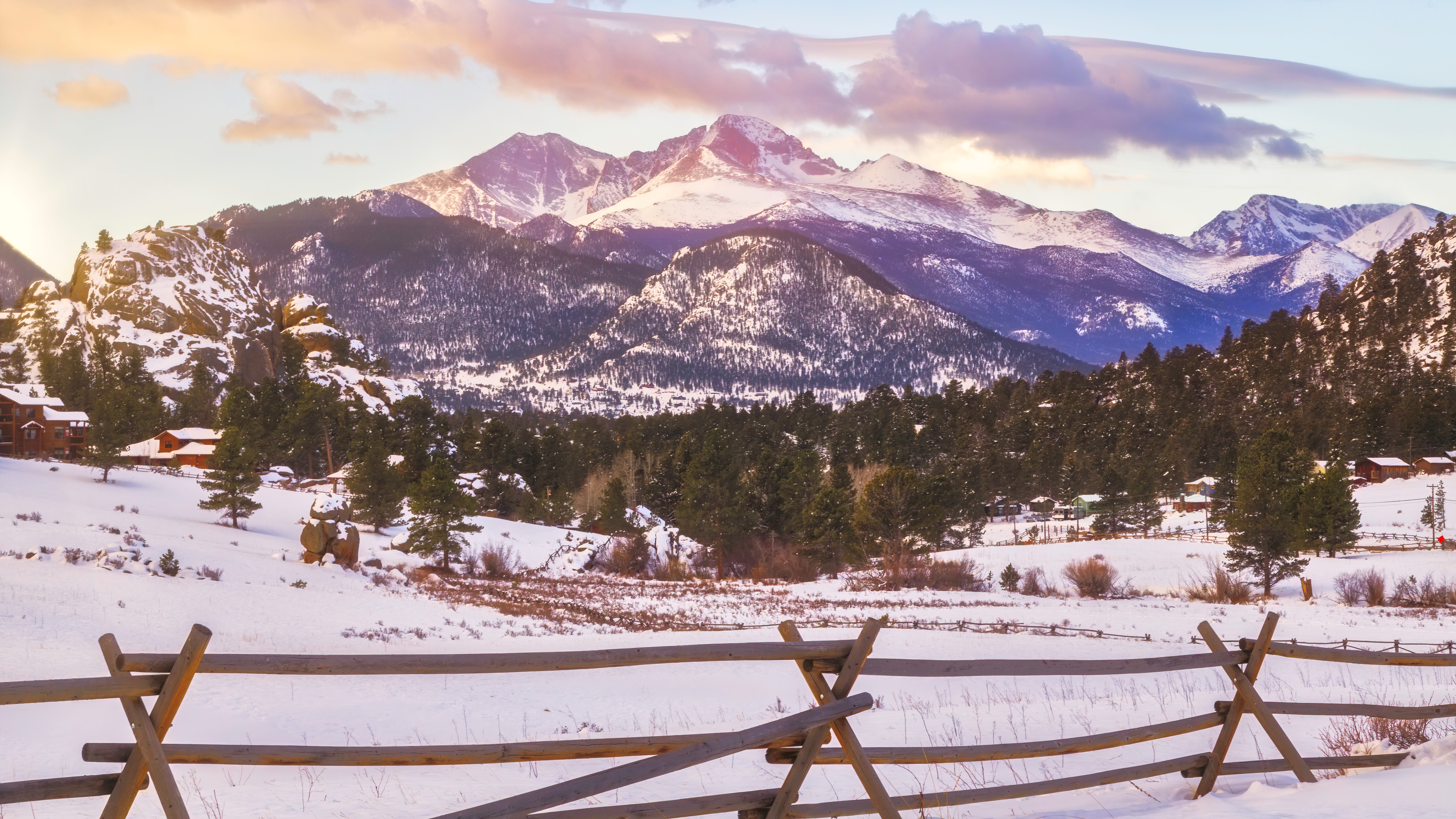
Distance: 1.5 - 5 miles
Difficulty: Easy
Upper Beaver Meadows is a sprawling, snow-covered meadow framed by Longs Peak which offers great opportunities for wildlife viewing in the winter. Find the trailhead about two miles from the park headquarters just beyond Moraine Park. You can either hike along the road which follows the north side of the creek, or take the trail on the left which meanders along the south side of the meadow. The two meet in the shadow of Deer Mountain at the west end of the meadow if you want to make a loop, in which case starting on the trail and moving in a clockwise direction offers the better views.
4. Cub Lake
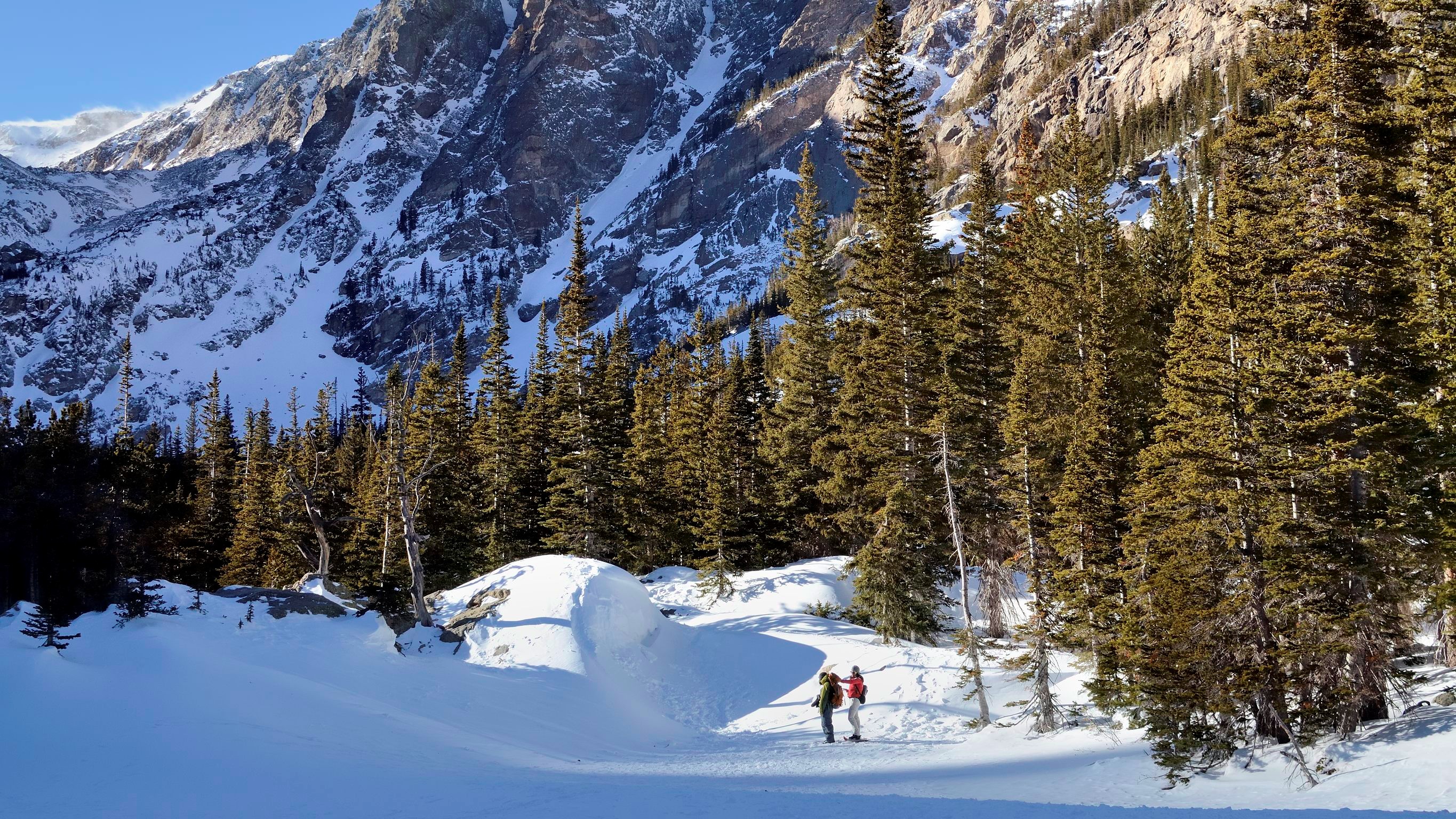
Distance: 2.3 miles
Difficulty: Moderate
Cub Lake sits in the shadow of Stones Peak and the area was scorched during Fern Lake Fire in 2012, making it a bit less scenic in the summer months, but the snow lends a stark beauty to the area when the cold settles in. From Cub Lake trailhead, hike up from Big Thompson River through pine and aspen trees, passing streams and moraines (glacial debris) on the way. Snow can make the last mile of this trail difficult to pass without snowshoes, so plan ahead if you intend to make it all the way to the lake. Return the same way you came or continue on to link up with The Pool and return on the Fern Lake trail for a six-mile adventure.
5. Chasm Falls
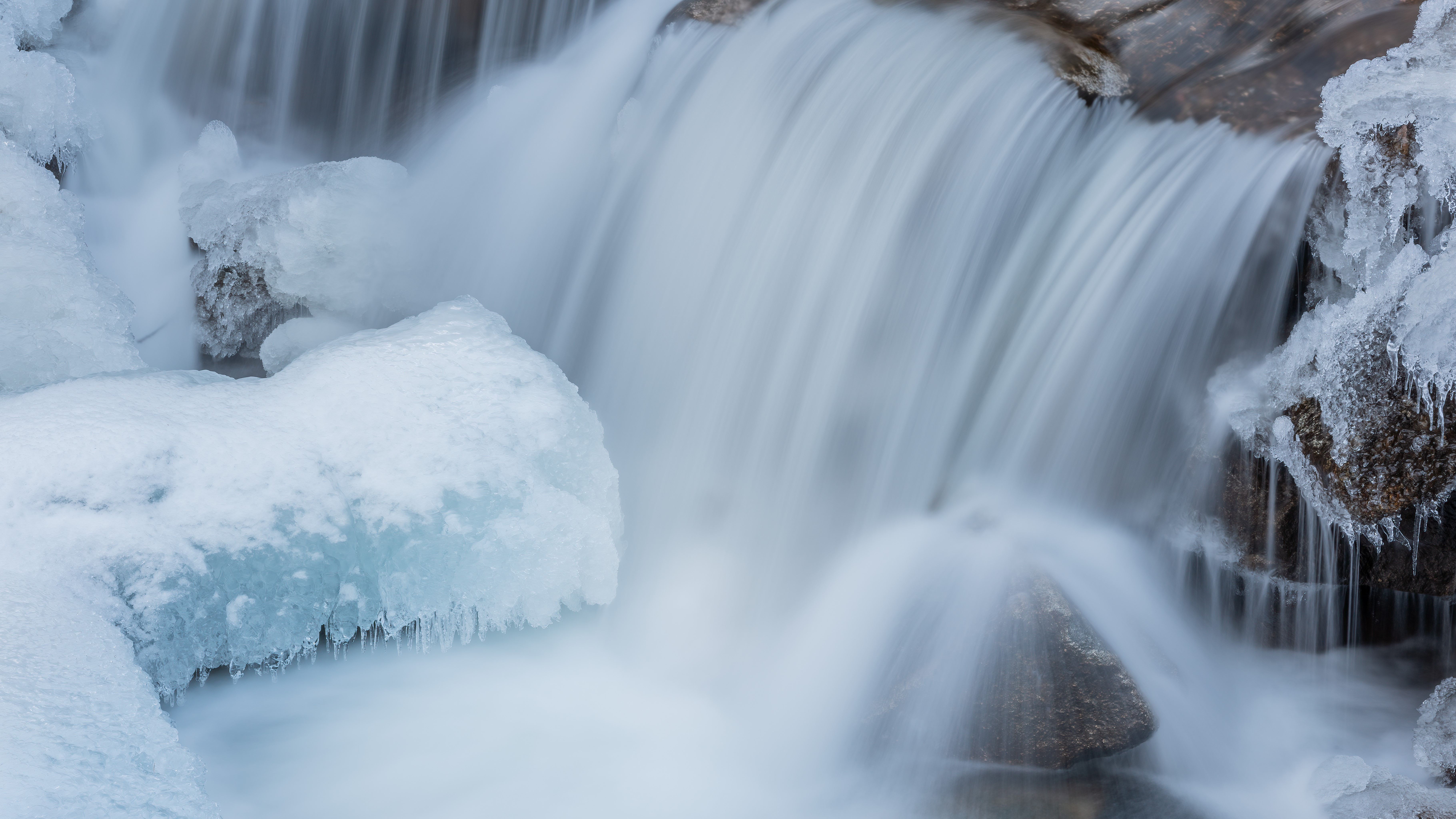
Distance: 2.5 miles
Difficulty: Moderate
Chasm Falls transform into spectacular ice formations come winter and the hike there takes you past the remnants of old cabins which housed the inmates who built scenic Fall River Road. Hike for 1.5 miles from the West Alluvial Fan parking lot to the Endovalley picnic area. At the junction, take Fall River Road and walk up the gentle incline for another mile to reach the falls. Beware that the ice formations can be dangerous, so take care in this area.
6. Gem Lake

Distance: 1.6 miles
Difficulty: Moderate
Gem Lake is cradled by some of the park’s most wondrous rock formations in an area that’s been sculpted by wind and weather rather than glacial erosion. The resulting landscape takes the shape of rounded granite and striking ridgelines that are listed on the National Register of Historic Places. The trail begins from the Lumpy Ridge trailhead about three miles north of Estes Park. Hike up the ridge through stands of aspen and pine catching fantastic glimpses of the Continental Divide and snow-covered boulders including the balanced rock known as Paul Bunyan’s Boot.
7. Deer Mountain

Distance: 3 miles
Difficulty: Strenuous
Though mountain hikes in the park in winter are generally treacherous and require mountaineering experience, Deer Mountain gives you the chance to explore a snowy summit if you’re willing to work for it. This hike is one of the busiest in summer, but you’re unlikely to see many other people if you attempt it in winter. From Deer Ridge Junction Trailhead on Highway 36 enjoy a steady, steep climb through pine forest to catch stunning panoramic views of the Rockies from the snow-covered summit plateau. Snow is likely to be deep on the switchbacks and summit, which stands at 10,000ft, so travel with snowshoes or skis.
Julia Clarke is a staff writer for Advnture.com and the author of the book Restorative Yoga for Beginners. She loves to explore mountains on foot, bike, skis and belay and then recover on the the yoga mat. Julia graduated with a degree in journalism in 2004 and spent eight years working as a radio presenter in Kansas City, Vermont, Boston and New York City before discovering the joys of the Rocky Mountains. She then detoured west to Colorado and enjoyed 11 years teaching yoga in Vail before returning to her hometown of Glasgow, Scotland in 2020 to focus on family and writing.

